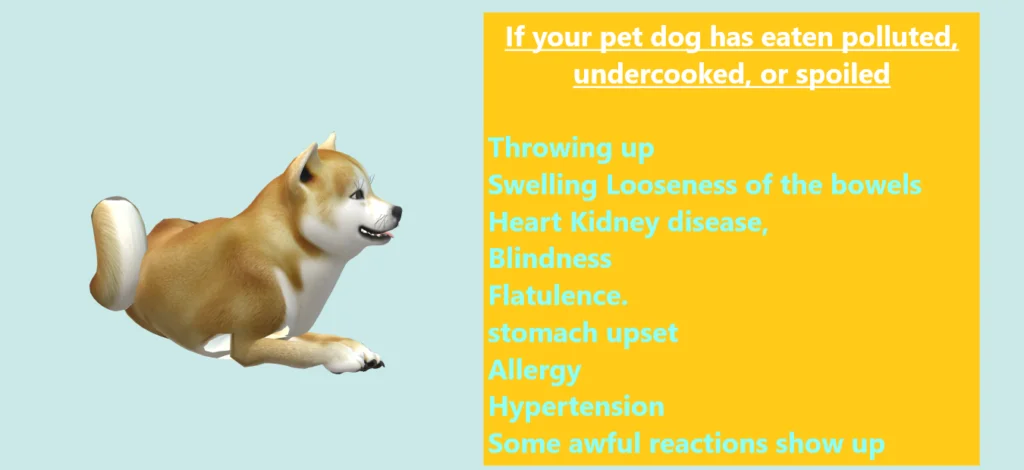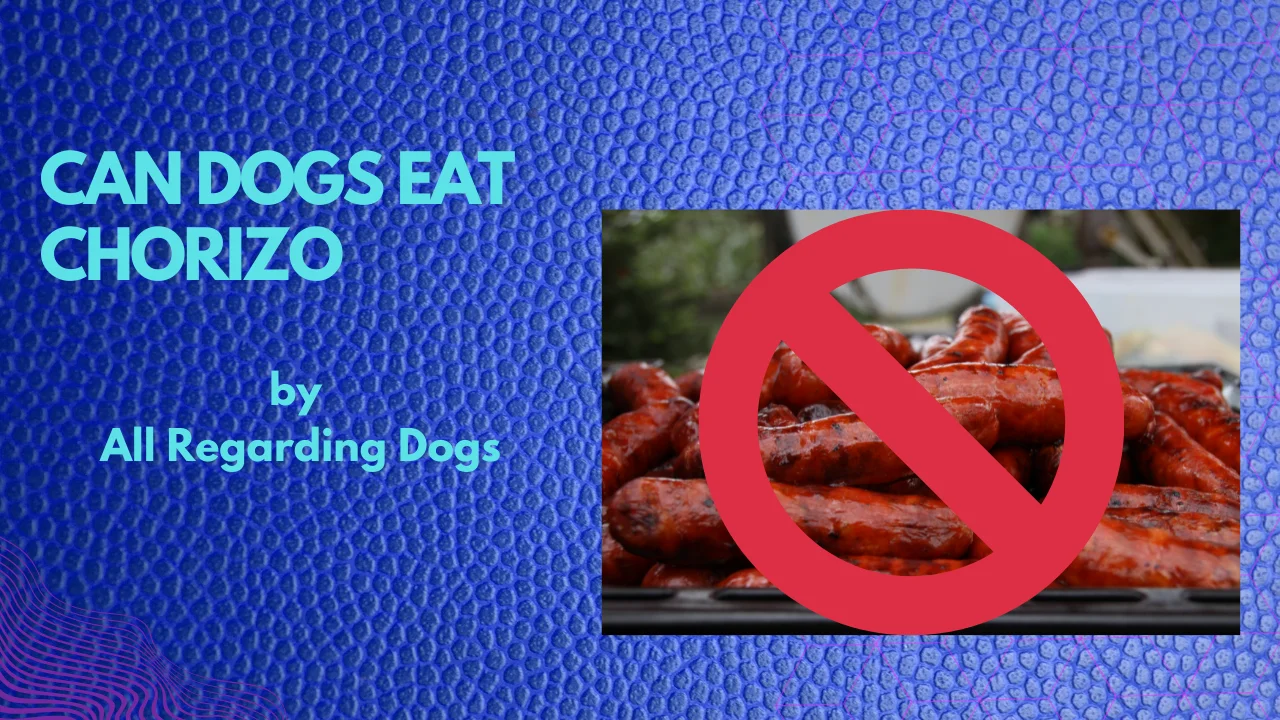Can dogs eat Chorizo, and is it secure? This guide will provide all you should be aware of when it comes to the Chorizo that dogs eat.
They are curious, hungry creatures, and they will always be interested in the food their owners are eating.
Are you a dog owner? If so, then you’re familiar with that feeling when your dog looks at you with puppy eyes, begging for a piece of food that you’re eating.
For most dog owners, this kind of stare can trigger guilt. And we tend to give pieces of human food to our pets without knowing whether they’re safe.
Dogs and humans react to various foods in different ways. Also, some foods which are safe for humans may not be optimal for your dog’s wellbeing. It is best to ensure that the food you share with your pet is safe for them.
What is Chorizo?
When evaluating the threat to canines, it’s helpful to comprehend what Chorizo is. Chorizo is a pork sausage usually experienced with paprika, Garlic, and various other seasonings.
It’s common in Portuguese and Spanish cuisines, to name a few, and might be consumed as a main course with rice, potatoes, eggs, and other active ingredients.
You can locate both fresh and treated Chorizo, and cured foods are prepared and then dried out to maintain the flavor.
Is Chorizo bad for dogs OR Can dogs eat chorizo ?
A couple of bites of cooked Chorizo, which does not contain any harmful spices, is not likely to be damaging to your dog.
However, it may trigger some belly upset.
More considerable amounts can be unsafe, specifically when the Chorizo contains harmful spices to canines or high degrees of sodium.
Why is Chorizo so bad?
Here are some of the risks when it pertains to prepared Chorizo:
Toxic spices.
While cooked pork itself is not dangerous for pet dogs, the flavoring in Chorizo might be an issue.
For the onion, for instance, Garlic (powdered or fresh) may be used in Chorizo and are both harmful to canines.
Garlic and onion come from the same household of plants called the Allium family.
All plants in this household (Garlic, leeks, shallots, onions, etc.) consist of a group of chemicals called sulfoxides and aliphatic sulfides, which are toxic to canines.
These compounds can harm red cells as well as create anemia. According to experts, signs of poisoning consist of intestinal concerns at first, like throwing up, Looseness of the bowels, and loss of appetite.
After a few days, pets might reveal signs and symptoms related to losing red blood cells, like quick breathing, exhaustion, light mucous membrane layers, or rapid heart rate.
The study recommends that 15 to 30 g/kg of fresh onions creates toxicity in dogs. Dried onions and onion powder are extra concentrated and would likely have a reduced threshold.
No details amount has been identified for Garlic, though researchers assume it may be much less potent than onions.
However, it’s wise to avoid feeding your canine with these active ingredients. While a few attacks of Chorizo are likely under the limit for serious side effects, it’s still advised you do not allow your canine to consume this.
Gastrointestinal upset.
Even if your brand of Chorizo does not have Garlic and onions, it can still create some digestive distress in some canines because of the high-fat content, various other flavors, and (in healed meats) nitrates.
Pet dogs with sensitive stomachs might experience diarrhea or throw up after eating Chorizo, mainly when consumed in large amounts.
While these signs are commonly moderate and not severe for the most part, some dogs have had allergies or other concerns when finishing Chorizo.
It is best to consult with a vet regarding other possible causes of these issues like nutritional sensitivity or illness if any signs proceed after a day or two.
High in sodium.
Chorizo is typically made with a lot of salt. Many high sodium foods are not suggested in a pet dog’s diet plan.
True hypernatremia– or excessive blood sodium degrees– is unusual for many canines but can happen due to overeating highly salty products like cooking salt, rock salt, or homemade play-dough.
According to the textbook Small Animal Toxicology, indicators of salt poisoning can happen as reduced as 2 grams per kilogram of body weight.
For example, if you had an extremely tiny four-pound canine (1.8 kg), indicators of salt poising can happen to start at around 3.6 grams of salt. A web link of Chorizo typically consists of concerning 790 mg sodium (according to the USDA).
Thus, eating more than four links each time would undoubtedly run the risk of salt poisoning for a tiny dog, as it would indeed begin resembling that 3.6 grams. (Larger canines would have much more tolerance before salt poisoning would undoubtedly happen).
However, this circumstance would undoubtedly be rather unlikely– it’s wise not to offer your canine way too many salted foods. Avoid Chorizo consequently.
The threat of unwanted weight gain.
Much like people, dogs can gain weight if they consume many calories from nutrient-poor choices.
Chorizo is naturally calorie dense, and while it does provide protein (essential for pet dogs)– it’s likewise relatively high in fat.
Way too much table food similar to this can bring about weight gain in your dog, specifically when combined with a pet’s natural tendency in the direction of overeating it.
Dangers of uncooked Chorizo for canines.
It’s also crucial to keep in mind that while a bit of cooked Chorizo (without Garlic or onion) might not be excessively high-risk, you need not feed your pet dog uncooked chorizo.
Uncooked pork can include tiny parasites called Trichinella .
Trichinella can be killed by thorough food preparation, yet undercooked or raw pork can cause an infection with these bloodsuckers called trichinellosis (or trichinosis).
The first signs of this infection usually are gastrointestinal upset.
As the parasites make their means into the canine’s muscles, muscular tissue pain, swelling, or tightness can occur.
The good news is that most infections in puppies tend to be moderate. Some dogs may not experience any exterior signs; however, some might have concerning symptoms.
Depending on the seriousness of the signs and symptoms and infection, anti-parasitic drugs may be used to deal with a pet with this condition.
To minimize your pet dog’s risk of this infection, avoid leaving raw cuts on the counter unattended where your interested canine pal can eat them, and always cook pork extensively. (This is necessary for human beings also, as humans are at higher threat of serious illness from Trichinella contrasted to pets).
All plants in this family members (Garlic, leeks, shallots, onions, and so on) include a group of chemicals called sulfoxides and aliphatic sulfides, which are hazardous to canines.
Consuming more Chorizo at a time would take the chance of salt poisoning for a highly tiny dog, as it would undoubtedly begin coming close to that 3.6 grams.
Chorizo usually is calorie-dense, and also while it does provide protein (essential for pet dogs)– it’s also relatively high in fat.
Too much table food like this can lead to weight gain in your dog, especially when integrated with a pet’s natural tendency toward overindulging.
Some canines might not experience any outward symptoms. However, some might have concerning symptoms.
What happens if your dog eats Chorizo?
Consuming Chorizo will always produce poor responses in pet dogs; there will undoubtedly be plenty of indication that something is wrong with your canine.
Vomiting, swelling, and diarrhea are a few of the nasty actions that will indeed appear if your pet dog has overeaten Chorizo.
If, after consuming Chorizo, your canine starts to be unwell, you ought to provide him water.
If the signs continue, you can attempt to clean up your pup’s tummy by supplying the skin and boneless boiled poultry and white rice.
Make sure not to include any seasoning on the rice or poultry. Keep feeding this dish to your canine for around three days.
When the signs settle down, please revive the standard diet plan daily.
If the symptom also persists after providing rice and steamed chicken food for three consecutive days, connect with your veterinarian quickly.
When should I see a vet?

Eating the typical well-cooked Chorizo, the undercooked or contaminated ones can additionally develop wellness problems in your dogs.
If your pet dog has eaten polluted, undercooked, or spoiled Chorizo, you will see;
- Throwing up
- Swelling Looseness of the bowels
- Heart Kidney disease,
- Blindness
- Flatulence.
- stomach upset
- Allergy
- Hypertension
- Some awful reactions show up
You need to have heard that snacks and bagels are poor for your canine’s wellness if they are seasoned.
The excessive salt web content of the food product can trigger salt iron poisoning in pet dogs.
It will certainly not develop any significant issue if you accidentally drop a little bit of Chorizo on the flooring and your pet dog eats it.
It all depends upon the quantity taken in and the size and age of your pet dog. Nonetheless, if you see any changes in your pet’s behavior, you ought to supply water.
As the salt focus in this food item is relatively high, it can cause dehydration in your canine companion.
But, as chorizos are high in salt and oil web content, you need to try not to supply them to your pet dog.
Overall, food products with an increased focus on fatty and salted components are hazardous to your pet.
Chorizo is one of the food items that taste scrumptious yet is dangerous to the health of your puppy.
You should have heard that bagels and popcorns are bad for your dog’s health if they are skilled.
The extreme salt web content of the food item can create salt iron poisoning in pets. If you see any modifications in your pet dog’s behavior, you must provide water.
As chorizos are high in salt and oil web content, you ought to try not to supply them to your pet dog.
Conclusion
Every dog owner loves their hairy buddies to remain healthy and also delighted.
Stop feeding them Chorizo if you are one of such pet moms and dads who want the ideal for your beloved pet dog.
Chorizo is not suggested for pets because it can trigger gastrointestinal upset and may contain hazardous seasonings.
A few bites of cooked Chorizo that do not include Garlic or onion powder ought not be significantly dangerous for your dog.
If your pet has eaten vast quantities of this sausage recently (predominantly if it consisted of Garlic or onions), or if your pet dog obtained right into uncooked pork, call your veterinarian for assistance.
